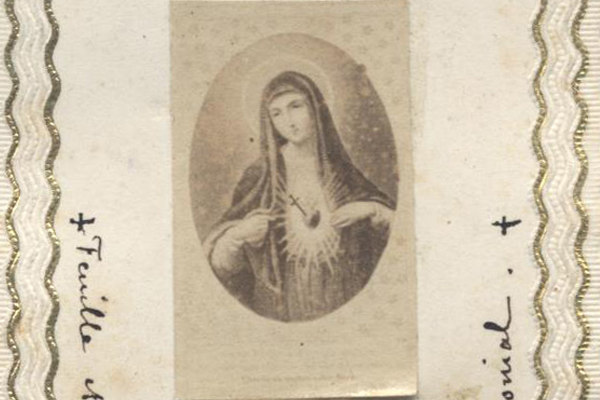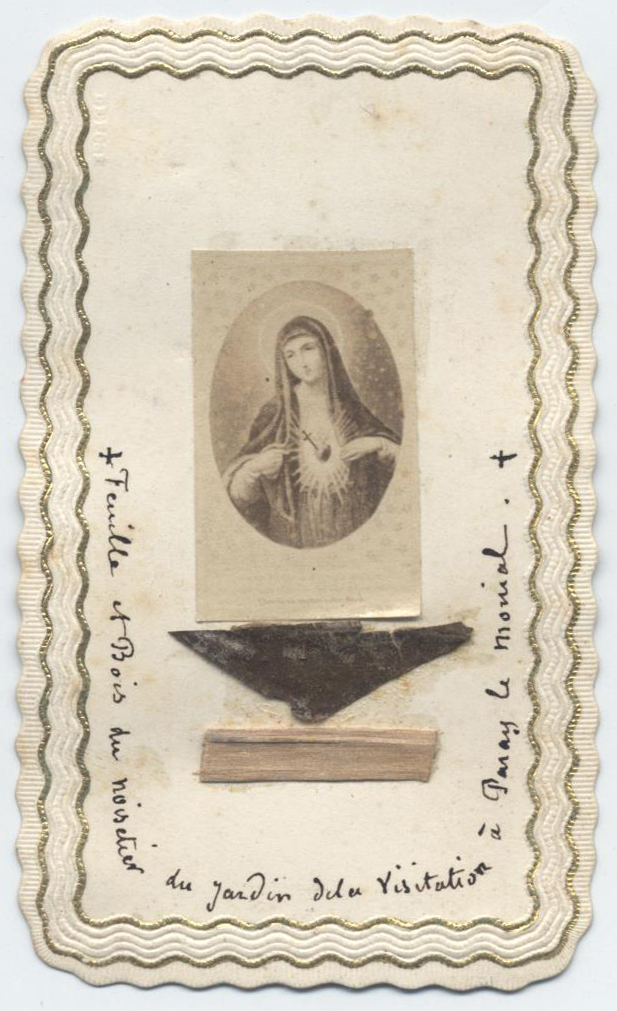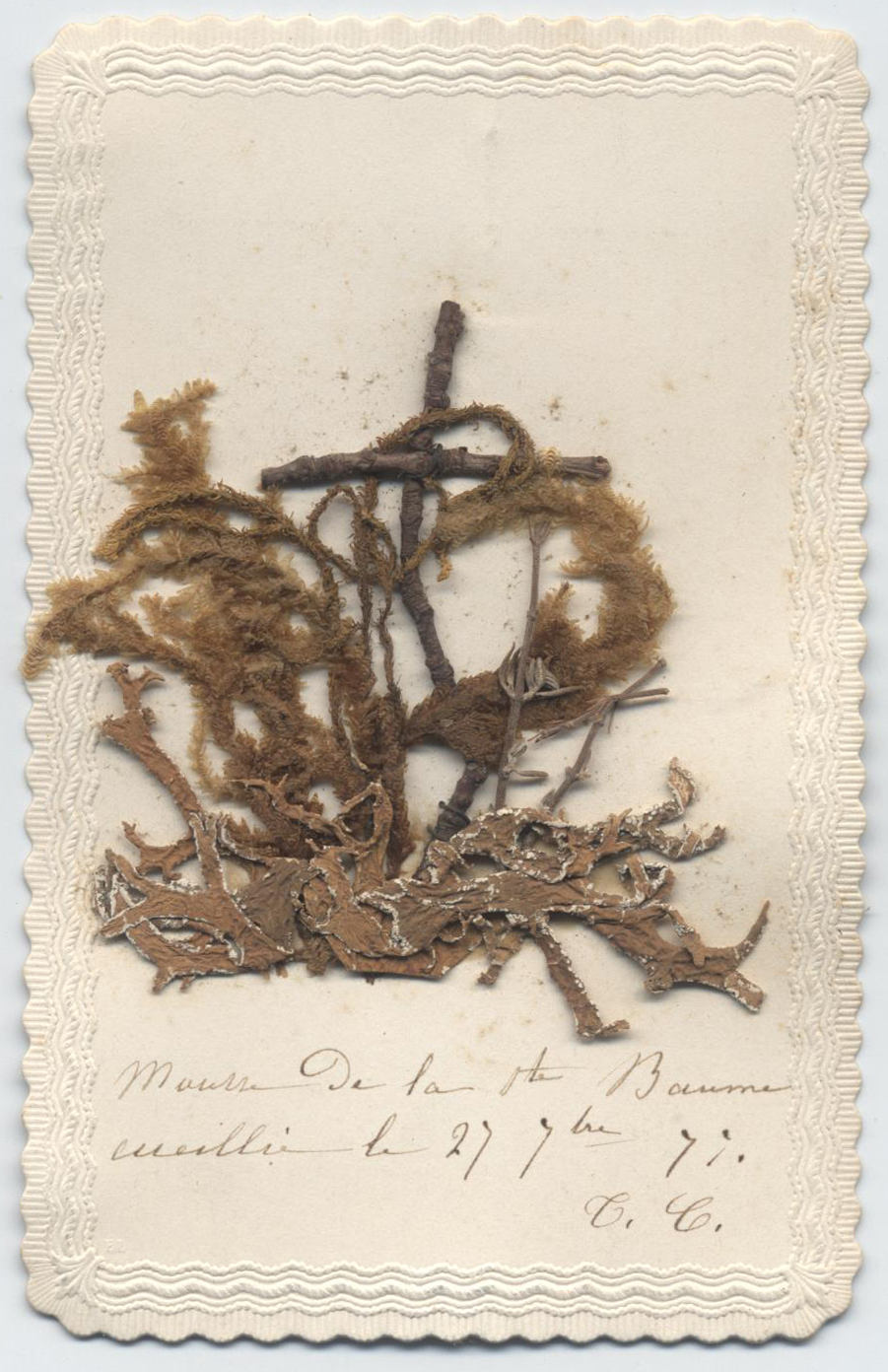Blogs

Documenting Ecospirituality and the Practice of Pilgrimage
By Jillian Ewalt
Welcome to the University Libraries first blog post in our Year of Mercy series! In this series, librarians and archivists will be highlighting themes from the University Libraries Catholic collections as they coincide with commemorative days during this jubilee year declared by Pope Francis in his 2015 papal bull of indiction, Misericordiae Vultus.
January 19th-21st recognizes those engaged in pilgrimage work, which makes this the perfect opportunity to highlight some of the Marian Library’s unique collections documenting Catholic pilgrimage.
Catholic pilgrims have long engaged with aspects of the natural world during pilgrimage to holy sites. In Christianity, Wilderness, and Wildlife Susan Power Bratton notes an important topic of discussion among various Christian denominations is the association of wilderness or outdoor retreats with holy sites.[1] This often private and sometimes solitary spiritual practice is occasionally documented via historic artifacts, in this case, two unique cards from the Marian Library’s August Martin collection. On the Paray le Monial card (below) the maker affixed a “leaf and bark from the hazelnut tree in the garden of the Visitation in Paray-le-Monial” underneath an image of the Immaculate Heart of Mary. The origins of Paray-le-Monial date back to 910 AD as a great monastic center. In 1610, St. Francis de Sales and St. Jeanne de Chantal founded the order of the Visitation of the Blessed Mother and Paray le Monial remains an important pilgrimage site to this day. In plant lore, the hazelnut is recognized as rhabdomantic, or, “having supernatural powers of divination to discover treasures hidden in the bowels of the earth.”[2] References to a “divining rod” made of hazelnut also appear in the King James Bible. The card, created in the mid-late 19th century, serves to document the pilgrimage experience of an unknown individual, and references the divine aspects of the plants collected at the site.

Religious material culture is often for-sale at holy sites and places of pilgrimage: Lourdes water in plastic, Mary-shaped vials, and ready-made souvenirs such as postcards and keychains.[3] Collecting botanical specimens and creating a personal keepsake from found specimens suggests a deeper interaction between pilgrim and place; perhaps documenting an experience that speaks more to integral ecology than consumerism.[4]
The second card (below) exhibits herbaria including moss and twigs fashioned into a cross-shape. In swift 19th century cursive the maker indicates, “moss from Sainte-Baume gathered July 27, 1877, C.G.” French Languedoc legends tells that Mary Magdalene lived out her last days as a hermit in the mountain caves of Sainte-Baume. As one recent pilgrim to Sainte-Baume relates, “A little backpack with water and a snack will do. The trail is obvious and we start through the forest. The trees are majestic and this is a very healthy forest, it must have water hidden in its soil…the trees are old and it is said that this forest was not cut because it was considered sacred.”[5]

These realia (objects and material from everyday life) help elucidate the histories and practices of pilgrimage in the late 19th century and the role of the natural world in the lives of Catholics during that time. In light of this jubilee they may, perhaps, provide a channel for us to consider those engaged in pilgrimage work and in providing continued access to holy sites.
For more information on the August Martin collection, please visit the Guide to the August Martin collection. For more information on holy cards such as these, please visit the Marian Library holy card collection.
– Jillian Ewalt, Librarian/Archivist and Assistant Professor
[1] Susan Power Bratton, Christianity, Wilderness, and Wildlife (1993).
[2] Ernst and Johanna Lehner, Folklore and Symbolism of Flowers, Plants, and Trees (1960).
[3] Betty Spackman, A Profound Weakness: Christians and Kitsch (2005). See also Colleen McDannell, Material Christianity: Religion and Popular Culture in America (1995).
[4] See encyclical letter, Laudato si’ of the Holy Father Francis: On Care for Our Common Home http://w2.vatican.va/content/francesco/en/encyclicals/documents/papa-francesco_20150524_enciclica-laudato-si.html
[5] Mary Magdalene Website, Pilgrimage to La Sainte Baume, http://www.mary-magdalene.com/id21.html
